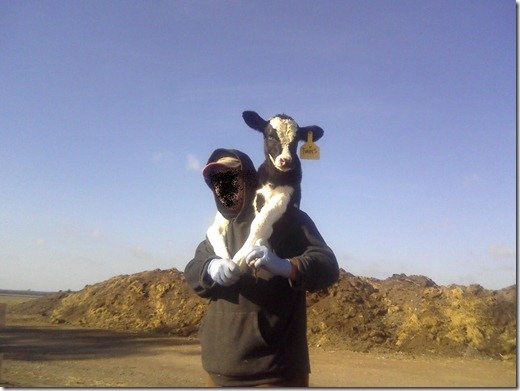
The Baby Calves
Since we are on the topic of calf care, i figured I’d share more about how the baby calves are treated on our dairy. The above picture i think is a good representation of how much we care for the calves. I can assure you that the above picture is not the angel of death, but one of our employees (he wanted to remain anonymous). He was carrying the baby to its new home.
Calf care makes up a significant portion of the work on our dairy. We feed them milk and water twice a day, feed them grain, nurse sick ones, and periodically add fresh bedding to keep their houses warm and dry. Separating the babies may seem cruel to some people, but i can assure you, we have the calves best interest at heart. The calves are housed separately to create a warm, dry, healthy environment for the calf, and to ensure that it gets the best possible nutrition during its first weeks of life. Because calves have weak immune systems during their first weeks of life, it is critical that they develop and grow strong and healthy in their individual houses.
Calves that are left with their mother usually do not receive an adequate amount of colostrum. When we house them individually, we can help them get the right amount of colostrum and nutrition. Colostrum is the cows first milk after having her baby, and is rich in nutrients and antibodies to help strengthen the immune system.
The following two pictures show the calves in their pens. The calves after a few days learn how to drink freely from the bucket which is filled with milk two times per day. When there is no milk, we provide them with water so they can keep hydrated. The picture with the pens shows the long line of pens. There are a lot of babies on our dairy! The picture of the pens was taken this winter when it was raining. The pens have roofs that flip down to protect the calves from the rain. After the rain stops, we flip the roofs back up so the calves can soak in the warm California sunshine. California sunshine is definitely one of the key ingredients to raising healthy happy cows.
The environment we provide for them, aims to keep the stress low, the environment clean, and the food nutritious to develop the strongest calves possible. Sick calves develop much more slowly (read about Webbzy), its in our best interest to ensure they grow well!
4 of my sisters feed calves every day, and love taking care of the calves. They spend a lot of time with them giving them all names. I was going though my picture file and couldn’t find many Holstein calves (the black and white ones). It seems like they like the Jerseys the best (the brown ones) because those were the only pictures i could find!

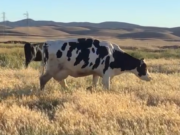
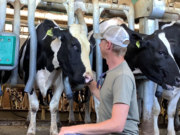
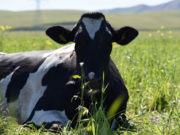
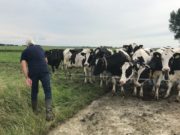



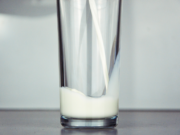

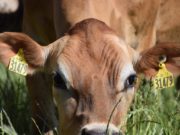
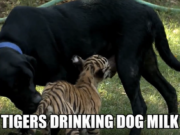
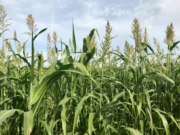
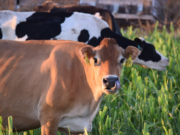
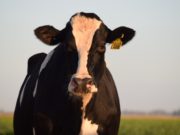
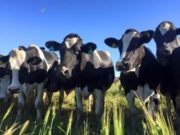








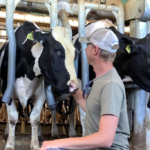


I found your website via Animal Blawg. Yes I am one of those dreaded vegans! Congratulations on creating such an impressive website, even if I do have criticisms regarding its content… First of all, please get your kitties fixed up – as a ‘cat carer’ I despair at the constant stream of abandoned and lost cats that find their way to our colony. The only way we can control a stray cat colony is by catching (not easy) the unfixed felines and the vet does the rest, at our expense! Puss is then returned to the colony if she/he is too old and wily to re-home. If only we could stem the tide of new arrivals, our colonies would eventually diminish until we reached that desired state of no strays. If only people would get their cats spayed or neutered, this problem would be straightaway halved!
All your animals in the pics look good and your farm is a caring one by all accounts, but what happens when those animals no longer produce enough milk? They go off to slaughter just as their calves did and who is to say what treatment they will receive once they have left you? There are too many reports of abuse of animals about to be slaughtered, but how can this problem be taken seriously unless every slaughterhouse has a webcam – that is never going to happen.
Regarding the video of abuse at Bushway Packing Inc., you blame the person filming the abuse, but often this person is an infiltrator for the very reason he would never get into the place otherwise. The abuse is usually systemic, which is how the infiltrator learned of it in the first place. If he had intervened, both camera and film would have been destroyed and his own safety compromised. He films despite his disgust, so that he can inform us. Those poor creatures being abused could not be helped, but filming it means this will not happen to other animals at that facility – at least not in the near future.
I am not a young nor am I radical, but I do support those brave enough to investigate cases of cruelty to animals and those who put their own comfort and safety to one side in order to help an animal in distress. I spent many summers during my childhood on a farm such as your’s where the farmer (my uncle) genuinely cared about his animals. However, it has taken me 50 years since then of learning about and witnessing bad behaviour at abattoirs, some of those who work in such places can be unimaginably cruel.
The story of the downed cow (http://www.animalliberationfront.com/Practical/FactoryFarm/Cows/DownedCow.htm) is just one of many validated reports of appalling cruelty at abattoirs, not just in the U.S., but here in New Zealand, in Australia, the U.K. and other countries that have so-called stringent animal welfare laws. It has to be said that we would never know about these cases if it was not for some brave soul going along and, to all appearances, becoming ‘one of the guys’. Incidentally, most photographs and videos of abuse are obtained covertly for obvious reasons. You feel anger at the guy for not intervening, how do you think he must feel?
You are a dairy farmer and I am an animal rights advocate – we could not be more opposed, but if we both have concerns when an animal is abused we have some common ground. Although my diet is now vegan, I do realise that good farmers are better than bad ones and that the farming of animals is not going to end any time soon, so from the cow’s point of view you are the preferred farmer.
Carol,
Thanks for commenting on my blog! You wrote that we both could not be more opposed since you are an animal rights activists and I a dairy farmer, but I think we may have a lot more in common than you know. I can tell you are very passionate about animals, and I am equally passionate about animals (probably cows more so though since i live on a dairy). So we really do share some common ground..
I appreciate your concern about our cat problem. 🙂 Yes, we are having an explosion of cats on the dairy, but there is plenty of room to support the population. We have a large area for them to roam, and plenty of food (we have a lot of milk for them). I guess when the population does get to large, we will get the cats fixed, but until then it’s been pretty fun. I have 7 brothers and sisters (all younger) so they all want their own little kitty to care for. It’s actually a great way to teach kids responsibility.
While the cows are on the farm, we try to keep them as comfortable as we can and provide them the best life possible. If you would like to know of anything specific we do at the dairy, let me know, I would be happy to answer any questions. Unfortunately they will have to be sold when they are old. It’s a hard fact of life, but it must be done.
It’s actually in the best interest for meat packing plants to treat the animals well, without causing the animals any stress. Stress adversely affects meat quality so the meat packing plants do have an added incentive to treat animals well.
In my one blog posting, I wasn’t talking about the packing plant incident you are talking about. I was referring to the Ohio Dairy Farm video from Mercy for Animals. What happened in that video made me sick to my stomach and I could barely watch it. One of my friends who is a dairywoman started crying. It angered me because it hurt me to think that people think that this is how dairy producers treat their animals. I understand your point about the point of obtaining video covertly, but that video was not obtained covertly…
There will always be irresponsible people out there treating animals badly, but the majority of people (I would say 99.99%) in animal agriculture really do respect animals and treat them well. W.D. Hoard, a leader of the U.S. dairy industry and founder of Hoards Dairymen Magazine (1885) may have said it best: “The cow is the foster-mother of the human race. From the day of the ancient Hindoo to this time have the thoughts of men to this kindly and beneficient creature as one of the chief sustaining forces of human life.”
I don’t treat my mother badly so why would I treat the foster mother of the human race badly. I’m glad to be your preferred farmer; there are many other good farmers too though. I encourage you to keep reading my blog, and actually visit a dairy farm or meet some farmers in your area. If you ever come to California let me know, and I would be happy to show you around.
Please let me know about any questions you have and feel free to comment on my blog from time to time. I like feedback!
Thanks,
Stephen